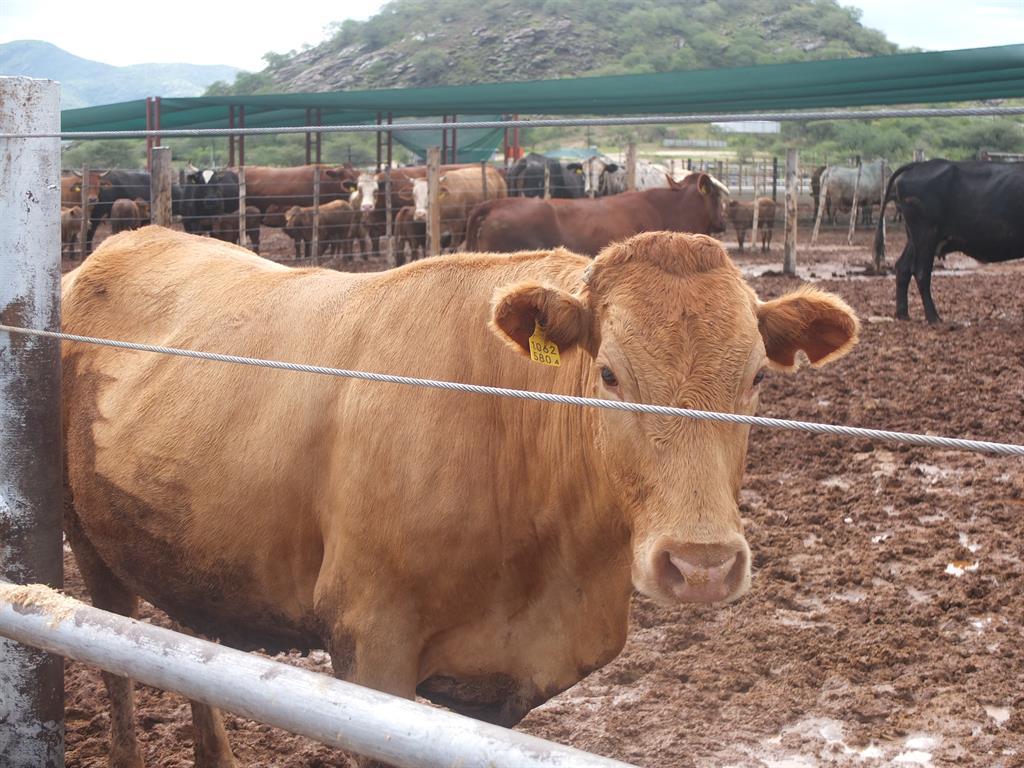Too much rain can cause livestock diseases
ELLANIE SMIT
WINDHOEK
Above-normal rainfall can lead to malnutrition in livestock, while it can also cause various diseases such as lumpy skin disease.
Livestock farmers in areas that have received exceptionally heavy rains should guard against diseases that break out during wet conditions and ensure that their livestock are not undernourished.
Agribank's technical advisor for livestock and grazing, Erastus Ngaruka, says because large areas in the country have received above-normal rainfall this year, it will have a direct impact on animal health. “As much as farmers waited for the rain, they must be observant enough to protect or save their animals from the adverse effects of rainfall.”
Parasites
The agriculture ministry last week announced an outbreak of lumpy skin disease at Eiseb in the Omaheke Region. The disease is transmitted by bloodsucking insects such as mosquitoes and biting flies. That is why the disease commonly occurs in the wet season or around water points. Ngaruka explained that the increased incidence of parasites, ticks, flies, moths and mosquitoes irritates livestock while grazing. “Wet environments are the breeding ground for biting insects. In addition, the pests are also responsible for the transmission of more diseases, such as Rift Valley fever and bluetongue.”
He said when it comes to internal parasites, roundworms and liver flukes are currently on the rise and are now the main cause of death among small stock.
The symptoms include anaemia, stomach pain and swelling under the lower jaw. Livestock must be dewormed, said Ngaruka.He says animals can be vaccinated against diseases before the start of the rainy season, or in October or November.Furthermore, wet and cold conditions can lead to diseases such as pasteurellosis (pneumonia or lung infection). It can be prevented by vaccination and treated with antibiotics.
Livestock in wet kraals can also get foot rot, which can be treated by cleaning kraals regularly and disinfecting with antiseptics or spraying with wound sprays.
Ngaruka said that pica can also occur among livestock. Pica is when a deficiency of phosphorus in particular results in an eating disorder where animals such as cattle tend to eat bones, plastic, stones and other unusual objects.
Intense rain can leach nutrients from the soil and damage grazing pastures.
In the sandy Omaheke, Ohangwena, Kavango and Zambezi regions, the sand's ability to retain water and nutrients is low. Nutrients and minerals are therefore washed deeper into the soil and end up out of reach of grass roots.
“The grass then experiences a shortage of important minerals such as phosphorus, potassium and nitrogen,” Ngaruka explains. He advises farmers to feed their livestock mineral supplements throughout the year, especially during the rainy season. He added that grass that gets too much water can be unpalatable, which means animals eat less. “Livestock grazing in water can be exposed to harmful or toxic organisms such as algae. Farmers in the Zambezi Region, for example, are worried that their cattle will swallow small frogs.” He added that poisonous plants are currently blooming and livestock can eat them. This can be treated with charcoal products.
WINDHOEK
Above-normal rainfall can lead to malnutrition in livestock, while it can also cause various diseases such as lumpy skin disease.
Livestock farmers in areas that have received exceptionally heavy rains should guard against diseases that break out during wet conditions and ensure that their livestock are not undernourished.
Agribank's technical advisor for livestock and grazing, Erastus Ngaruka, says because large areas in the country have received above-normal rainfall this year, it will have a direct impact on animal health. “As much as farmers waited for the rain, they must be observant enough to protect or save their animals from the adverse effects of rainfall.”
Parasites
The agriculture ministry last week announced an outbreak of lumpy skin disease at Eiseb in the Omaheke Region. The disease is transmitted by bloodsucking insects such as mosquitoes and biting flies. That is why the disease commonly occurs in the wet season or around water points. Ngaruka explained that the increased incidence of parasites, ticks, flies, moths and mosquitoes irritates livestock while grazing. “Wet environments are the breeding ground for biting insects. In addition, the pests are also responsible for the transmission of more diseases, such as Rift Valley fever and bluetongue.”
He said when it comes to internal parasites, roundworms and liver flukes are currently on the rise and are now the main cause of death among small stock.
The symptoms include anaemia, stomach pain and swelling under the lower jaw. Livestock must be dewormed, said Ngaruka.He says animals can be vaccinated against diseases before the start of the rainy season, or in October or November.Furthermore, wet and cold conditions can lead to diseases such as pasteurellosis (pneumonia or lung infection). It can be prevented by vaccination and treated with antibiotics.
Livestock in wet kraals can also get foot rot, which can be treated by cleaning kraals regularly and disinfecting with antiseptics or spraying with wound sprays.
Ngaruka said that pica can also occur among livestock. Pica is when a deficiency of phosphorus in particular results in an eating disorder where animals such as cattle tend to eat bones, plastic, stones and other unusual objects.
Intense rain can leach nutrients from the soil and damage grazing pastures.
In the sandy Omaheke, Ohangwena, Kavango and Zambezi regions, the sand's ability to retain water and nutrients is low. Nutrients and minerals are therefore washed deeper into the soil and end up out of reach of grass roots.
“The grass then experiences a shortage of important minerals such as phosphorus, potassium and nitrogen,” Ngaruka explains. He advises farmers to feed their livestock mineral supplements throughout the year, especially during the rainy season. He added that grass that gets too much water can be unpalatable, which means animals eat less. “Livestock grazing in water can be exposed to harmful or toxic organisms such as algae. Farmers in the Zambezi Region, for example, are worried that their cattle will swallow small frogs.” He added that poisonous plants are currently blooming and livestock can eat them. This can be treated with charcoal products.





Comments
Namibian Sun
No comments have been left on this article